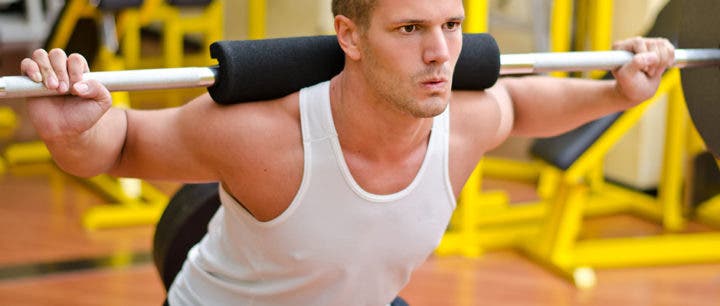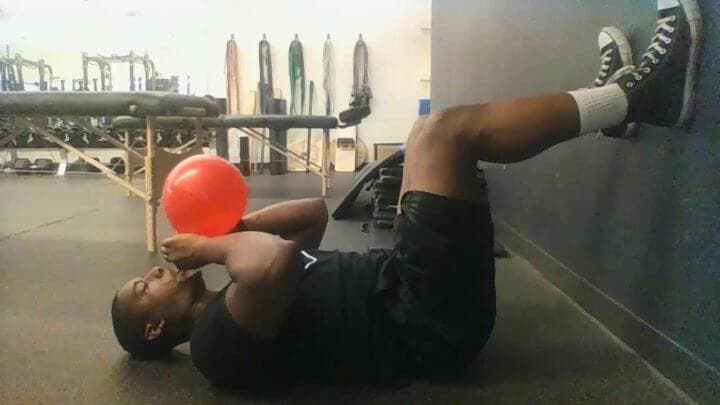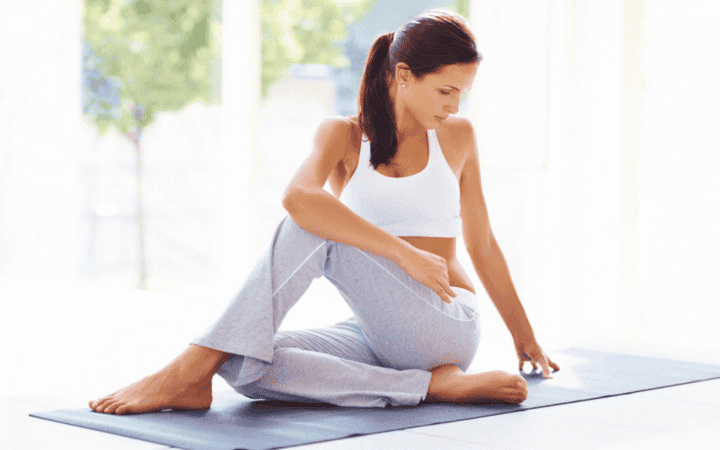When we approach the subject of strength training, we always do it by talking about the same aspects: the types of grips, the techniques of the exercises, the breaks, the intensity … And yet we very seldom talk about a basic aspect when it comes to to strength training and performance: breathing.
As a general rule, we load the discs on the bar, get into the starting position and start doing our warm-up sets and effective sets, finish the exercise and move on to the next one. And when we analyze our performance, we are left with the feeling of having been able to give more or that we are progressing very slowly. However, why don’t we pay attention to our breath when we strength train ?

Why is breathing important when training strength?
For those who have never attended a yoga or meditation / relaxation class, one of the first things that they usually teach us is to have a correct breathing technique , as this will help us to work the different postures and learn to control our core and our body (in addition, if we know how to control our breathing , we will know how to relax much better when we are facing a situation of stress or anxiety).
To take the discipline of yoga as an example, experts in this technique call breathing “pranayama”, which translates as ” breath control” (“prana” means strength and “yama” means regular or lengthening), which It gives us an insight into the importance of breath control for them.
In addition to being related to sports performance or strength training, breathing is the key to learning to connect our mind with the rest of the body through meditation and knowing how to relax in tense situations such as stressful work, traffic jams. traffic or just that family member that gets on our nerves so much.

Why should we become aware of our breathing?
That the process of breathing is something totally “automatic” and involuntary (people cannot choose whether to breathe or not, it is something that our body does automatically and naturally) does not mean that we cannot learn to control it in a certain way. In fact, knowing how to become aware of our breathing and learn certain control and modulation techniques is something that we should all know for all aspects of our life. Furthermore, the fact that it is an automatic process does not mean that the respiratory pattern is correct.

Breathing as a mechanism of the mind-body connection
To understand the connection between the body and the mind in the breathing process, we must talk about the levels of respiration that can be given: the higher the breath is in the chest (that is, when breathing in the chest first), the more “on” the nervous system is, and the deeper it is in the belly (when inhaling it is the belly that “swells” first), the more relaxed it can remain.
Diaphragmatic breathing releases pressure and creates space for nerves such as the vagus nerve. The vagus nerve activates the parasympathetic nervous system, leading to the relaxation response and cultivating balance. Exhalations, meanwhile, help pump nutrients to the muscles and massage the nerves.
Once you know this, you need to know 6 useful breathing techniques for strength athletes .

6 breathing techniques to improve our strength
1. Breathing with core compressions
For this technique you must do the following:
- Sit in a chair in such a way that you think you have a stiff rod running through our spine, as if you cannot bend.
- Exhale abruptly to empty all the air, avoiding hunching forward. At this point of vacuum, you will hold out for a few seconds (2-3 seconds will be enough).
- Inhale in a slow and controlled way through the nose, paying attention to whether we use the shoulders or neck muscles to inhale, and then exhale again.
In each breath we must concentrate on tightening the abdominal muscles as if we were contracting them towards the spine. We must avoid “pushing out and down”.

2. Breathing with spinal rotations
- Sitting on a chair, we will position ourselves in such a way that we maintain the tension in our whole body and our back straight.
- We will exhale and turn towards one of our sides (we can use the opposite arm of the side to which we turn to place on the thigh of the side to which we turn to maintain the position if it is easier for us).
- Before turning to the opposite side, take five full breaths.

3. Ujjayi breaths
- We will breathe in slowly and evenly through the nose with the mouth closed.
- Breathing with sound, we will exhale through the back of the throat paying attention to the balance in sound, speed and duration of your breath.
In addition to yoga and calisthenics, this type of breathing is also great for staying focused on sports like surfing, hiking, trail running, or cycling.
When performing resistance lifts, such as bicep curls or ring drops, we can perform a variation of this technique, exhaling at the moment of effort while contracting our muscles and compacting our core.
For heavy strength exercises like deadlifts and squats, breathing is key to a good level of strength . This breathing technique will help exercise the deep core muscles and create intra-abdominal pressure, which is like an internal air cushion to help protect our spine.

4. “Force” breaths
This technique is ideal to perform prior to heavy lifting in our workouts or if we need to lift a heavy weight at some point in our day-to-day life. For it:
- We will contract our pelvic floor by tightening our breath at the base of our spine (what we usually call compacting our core).
- While we contract the muscles of our core, we will exhale, to later inhale halfway in such a way that we maintain the “participation” of the core and intra-abdominal pressure.
- As we lift the weight, we will exhale.

5. Prone diaphragmatic breaths
This breathing technique is ideal for relaxation processes after a demanding work routine or to alleviate stressful moments and situations, because when performed lying face down, it will help us to relax more. To run it correctly:
- We will have to lie face down with the arms crossed in front and the forehead resting on the back of the hands.
- We will start with three to five breaths in the chest and upper rib cage, in the middle of the back, and finally in the lower part of the back.
- With each inhalation, we will fill and lift the torso off the ground as if we were in lumbar hyperextension.
- As we exhale, we should notice that the abdominals come off the ground. If not, you are not running it correctly

References
- Gonzalez, K. 6 breathing techniques to improve your strength training. For Livestrong. [Revised November 2017]
